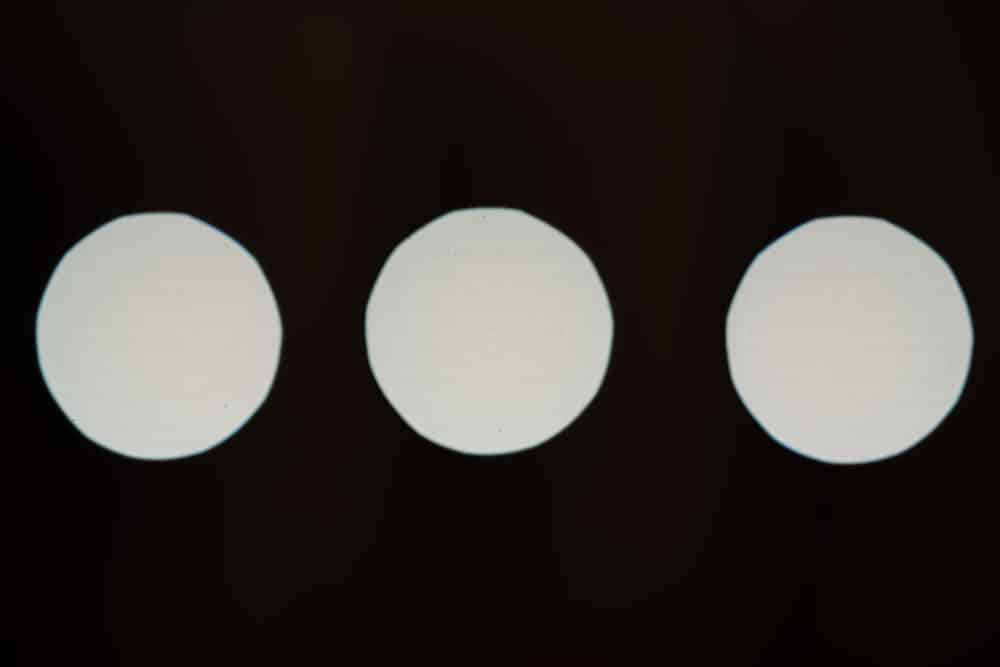LensRentals has loaned me a Nikon 58 mm f/0.95 Noct for testing. In the previous post, I showed you out of focus point spread functions wide open and at f/1.4. Those were made with the mechanical shutter. They were the second set I made. The first set was made using EFCS, and it showed shading:

Compare that to the shots with full mechanical shutter:

These were made at 1/1250 second. The shading effect diminishes as the shutter speed gets slower, and gets worse as the shutter speed gets higher.
Fully electronic shutter looks about the same as fully mechanical shutter.
Bernard Delley says
The EFCS illumination non-uniformity may have nothing to do with the lens PSF. I expect that the fully electronic shutter “curtains” go with quartz clock precision. The mechanical shutter is released by the quartz clock, but on the run its subject to inertia and spring as well as friction forces. On EFCS mode, one has the mechanical issues of the second curtain and the matching of the electronic first “curtain” to the nonuniform mechanical edge travel. I seem to remember one of your oscilloscope studies where a EFCS with two constant velocity sub-intervals was shown.
JimK says
D’accord.